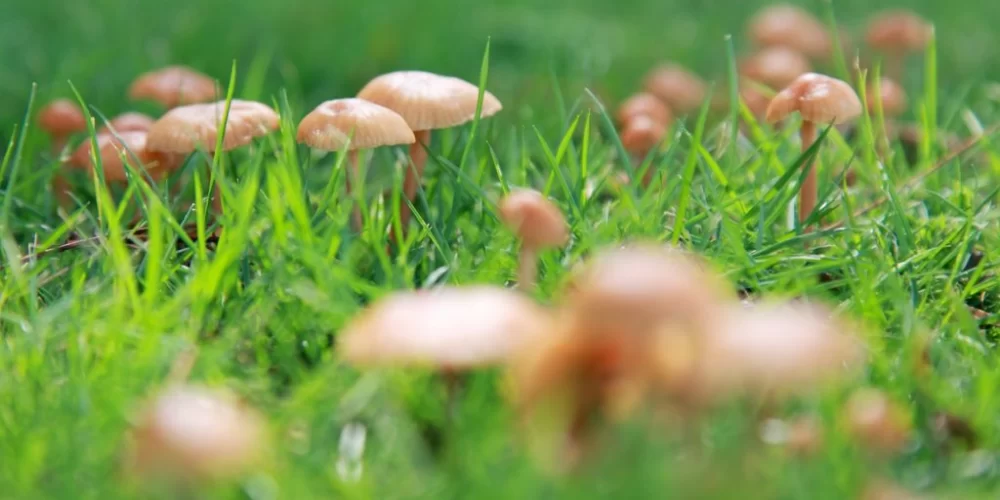
How I Dealt with Lawn Fungus and Saved My Lawn
If you've ever found yourself staring at a patch of your once-perfect lawn, now covered with unsightly, fungus-ridden patches, then you know just how frustrating it can be. I’ve been there, and let me tell you, it's not just about aesthetics—fungus can seriously affect the health of your lawn. In this article, I'll walk you through my experience and share practical advice on how to deal with lawn fungus effectively. You don’t need to be an expert gardener to tackle this issue; all you need is the right information and a bit of patience.
1. Understanding Lawn Fungus: What You're Dealing With
Before diving into the treatments, it’s important to understand what lawn fungus is and why it occurs. Lawn fungus is essentially a type of lawn disease caused by various fungal organisms that thrive in moist, warm conditions. You might notice symptoms like yellow or brown patches, unusual growth patterns, or even slimy spots of mold. If left untreated, fungus can spread and damage your grass significantly.
Some common types of lawn fungus include:
- Brown Patch: This is one of the most widespread lawn diseases caused by the Rhizoctonia fungus. It typically appears as circular brown patches and is common in humid, warm weather.
- Dollar Spot: Small, light brown spots that resemble the size of a dollar coin, often caused by excessive moisture or nutrient deficiencies.
- Powdery Mildew: A white, powdery substance that coats grass blades, typically occurring in shaded areas with poor air circulation.
2. Identifying Lawn Fungus Early
In my case, I first noticed the brown patches when I was mowing the lawn. It looked like patches of grass were thinning out, and some areas were turning completely brown. At first, I thought it was just a lack of water, but after further investigation, I realized it was a fungal infection.
To effectively tackle lawn fungus, early detection is key. Some signs to watch out for include:
- Discolored patches in your lawn (brown, yellow, or grayish hues).
- Irregularly shaped spots or rings on the grass.
- Visible mold or powdery growth on grass blades.
- Grass that feels spongy or slimy underfoot.
3. Proper Lawn Care to Prevent Fungus
Once I knew what I was dealing with, I realized that prevention is always better than treatment. Maintaining a healthy lawn is the best way to keep fungus at bay. Here’s what I did:
- Watering: I started watering my lawn early in the morning to avoid wet grass overnight. Watering in the morning ensures the grass dries out before the cooler evening temperatures set in, preventing the perfect environment for fungus to grow.
- Fertilizing: Over-fertilizing can actually encourage fungus growth. I made sure to use a balanced fertilizer with the proper nutrients and avoided excessive nitrogen, which can promote fungal activity.
- Mowing: Keeping my lawn mowed at the proper height was crucial. I found that keeping the grass slightly taller helped it stay healthy and less susceptible to fungal diseases.
4. Treatments for Lawn Fungus
Even with the best lawn care, sometimes fungus still finds a way to settle in. When that happened to me, I turned to fungicides. Here’s a breakdown of what I used and how it worked:
- Fungicide Sprays: These are a common solution to fungal issues. I applied a fungicide containing a systemic active ingredient that works by being absorbed into the plant and killing the fungus from within. Always read the label carefully and apply it in the recommended amount to avoid harming your lawn.
- Organic Fungicides: If you're looking for a more natural approach, there are organic fungicides available that use ingredients like sulfur or neem oil. I found that these were effective for minor infestations and much safer for the environment.
5. Aftercare: Protecting Your Lawn from Future Fungus
Once the fungus was under control, I took several steps to ensure it didn’t come back. This included regular lawn maintenance practices like aerating the soil, which improves water drainage and prevents excessive moisture buildup. I also made sure to reseed any patches of grass that were severely damaged, which gave my lawn the best chance to recover and flourish.
Remember, lawn fungus can be a tricky problem, but with the right care, you can definitely overcome it. It may take some time and effort, but your lawn will thank you with lush, green grass that’s free from fungal diseases.
6. Lawn Fungus Treatment Mistakes to Avoid
In my early days of dealing with lawn fungus, I made a few mistakes. I’ll share some of them so you can avoid these pitfalls:
- Over-Watering: One of my biggest mistakes was thinking that more water would solve the issue. Unfortunately, it made things worse by providing even more moisture for the fungus to thrive.
- Ignoring Proper Airflow: Fungus loves humidity and poor airflow. I didn’t realize that leaving the grass too long and allowing for thick thatch to build up was blocking air circulation. This created an ideal breeding ground for the fungus.
By avoiding these mistakes and following a consistent maintenance plan, you'll be able to keep your lawn fungus-free and looking its best.
7. Real-Life Success Story: How I Revived My Lawn
To end this article, I want to share a short story about how I successfully revived my lawn. Last summer, after battling with fungus for weeks, I decided to take a more proactive approach. I applied a systemic fungicide and followed up with proper watering, mowing, and fertilization. Within a few weeks, the brown patches disappeared, and my lawn began to thrive once again. It wasn’t easy, but it was completely worth it.
So, if you're struggling with lawn fungus, don’t lose hope. With the right care, treatment, and a bit of patience, your lawn can bounce back. Happy gardening!








